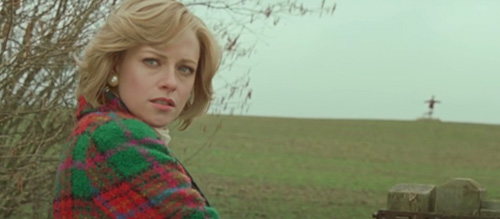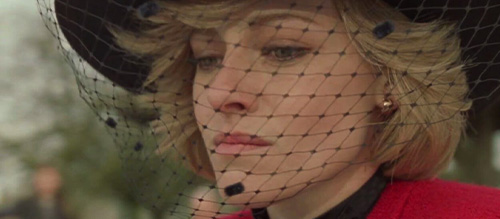Spencer (2021) LFF Review
Spencer (2021)
Director: Pablo Larraín
Screenwriter: Steven Knight
Starring: Kristen Stewart, Timothy Spall, Jack Farthing, Sean Harris, Sally Hawkins
Following his perversely intricate and dazzlingly innovative tale of America’s favourite first lady Jackie Kennedy, Chilean filmmaker Pablo Larraín delivered Ema, a movie documenting the aftermath of a failed adoption. In both of these works, we saw Larraín explore a fascination with the restraining societal pressures placed upon women desperate to break free. With his newest feature Spencer, Larraín picks up the lingering threads of each of these previous films and twines them together to deliver a hauntingly crisp portrait of the people’s princess, the infamous Lady Diana. Given that Spencer is just as revealing, present and cinematically astonishing, Jackie is the obvious comparison. However, although we are dealing with the same calibre of female iconography, it’s Ema’s free spirit and intricate illustrations of motherhood that Spencer echoes most vividly.
Spencer follows Lady Diana during her final Christmas at Sandringham House as a member of The Royal Family. It opens with the written word: ‘A fable from a true story’, a message intended to let us know that what lies beyond will be fact coloured in with fiction. Our introduction to Larraín’s Diana meets British expectations of her as a rogue spirit: lost in the countryside, she pops into a fish and chip shop to ask the shocked working-class locals for directions to the 20,000-acre estate at which her famous family expect her to spend the Christmas period. Having arrived fashionably late to the grounds, Diana comes face to face with former military officer Equerry Major Alistair Gregory (Timothy Spall). He enforces the rules and standards of tradition within the house. Major Gregory is the complete antithesis of Diana: he is a stickler for the rules, and she is an untameable spirit. Their dislike for one another is instant, with Major Gregory unwilling to allow Diana any reprieve from her royal duties and Diana at pains to play by the rules.
She puts on a brave face for her two young boys, William and Harry. However, her mounting discomfort with the ugly situation becomes increasingly difficult to hide the more pressure Major Gregory piles on. The rules are simple enough: attend dinners on time, wear the right clothes on the right days, keep out of sight of photographers, don’t wander off alone. Each rule is further confinement for Diana, who already views her situation as a form of imprisonment. Her family’s disapproval is unspoken but obvious. Distasteful glances and whispered words do so much, but the real paranoia extends from what we cannot see. Larraín keeps the rest of the royals off-screen as much as possible; we keep watch of Diana’s pained expression as she exists in the space around them. Subsequently, we’re forced to fill in the hostile blanks through Diana’s shaking breaths and watering eyes.
Spencer defies expectation in the most curious of ways. Although it does offer a traditional interpretation of Diana’s experiences toward the end of her marriage to The Prince of Wales, Larraín extends his vision by delving into the supernatural and probing Diana’s psyche. Anne Boleyn serves as an omen of what is to come for the caged princess; after discovering her biography, Diana begins to see visions of the beheaded former wife of Henry The Eighth. Like Boleyn, who feared the existence of Jane Seymour, the presence of Camilla Parker Bowles exacerbates Diana’s mounting hysteria, especially after she learns her husband has bought them each an identical pearl necklace. Apparitions of Boleyn filter in and out of Diana’s life, sometimes feeling somewhat overworked and nonsensical, yet working to push Larraín’s vision beyond the limitations of your typical biopic. To demonstrate the physical torment happening inside Diana’s head, Larraín frequently blurs the line between fact, fiction, truth and reality. In one scene, we see Diana pull at the constrictive pearls around her neck until the elegant collar snaps, sending a cascade of pearls into her gourmet soup. Instead of leaving the soup untouched, Diana obeys her royal duties and obediently eats every morsel, pearls and all. She bites down on each precious gem, fighting through pain and discomfort to complete the simple task of cleaning her plate. In moments such as these, Spencer resembles a traditional fairy tale, with Diana serving as the captured damsel, locked away inside a house of horrors.

Although the presence of an American in the shoes of Lady Di might prove divisive among the hardcore royalists, in the lead role Kristen Stewart delivers her most outstanding performance yet. With her English Rose complexion, perfectly styled hair and charming British accent, she kicks off the lingering presence of Bella Swan and blooms into a future Oscar contender. Occasionally surface-level dialogue hinders her performance, and Diana often becomes unsympathetic and bratty – at least she does for those of us whose biggest problems don’t revolve around Chanel jackets and priceless jewellery – but it’s Diana’s complete hysteria that feels most out of place. Although Stewart astutely handles themes of bulimia and depression, the script’s failure to elevate her beyond melancholia means that the legend of Diana’s fierce free spirit begins to slip away.
Larraín spares no extravagance; he fills the space with the most elegant of trimmings. Johnny Greenwood’s (You Were Never Really Here) haunting score pierces through each scene, exacerbating Diana’s slipping grasp on reality. His harsh strings and sharp chimes rip through the character’s core, demonstrating the oppressive reality of her surroundings. Each costume exists through meticulous attention to detail, and each prop, from the delicate finery of crêpe soufflé d’abricot to the placement of discarded Christmas wrapping paper, is perfectly stylised. Claire Mathon (Portrait of a Lady on Fire) delivers gorgeously conceptualised cinematography: each frame is as impressive as any of the timeless artworks hanging on the walls of Sandringham.
Spencer works best when Larraín achieves his ambition to humanise Diana, free her from the prison of infamy and realise her as a mother and as her own person. The scenes she shares with her children are Spencer’s most moving, as, within them, we are allowed a small glimpse at the princess unshackled from fear and the pain of her failing marriage and crumbling worries. Spencer is an ambitious achievement from Larraín, which drastically reframes the tragic legacy of Britain’s most beloved female icon.
19/24


